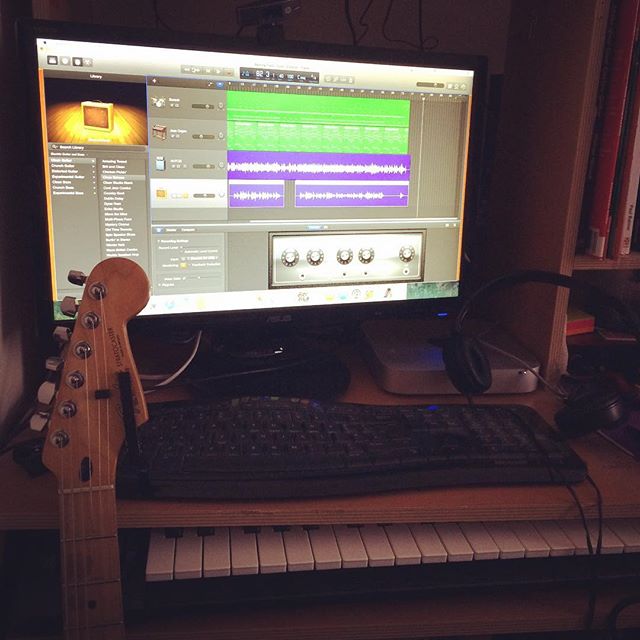Now this is a little bit of a funny topic for most guitarists because we spend a lot of time and money on our amplifiers. I would argue that regardless of your guitars quality that your amp and speaker has the last say, for better or worse. So with that in mind I decided to ditch the Orange Tiny Terror for a humble DI box and Focusrite 2i4 interface for this weeks post.
Basic DI Box Features
Behringer always tries to offer professional level equipment at extremely affordable prices. As you often find with products from companies with something to prove this DI box has some interesting extras thrown in.
Firstly those guitarists with experience of Behringers cheaper pedals will be concerned about its durability. The DI has a solid aluminium chassis and protective rubber on each corner to protect it should you (or your band members) drop it. I’ve actually seen Behringer DI boxes being used in smaller venues now thanks to their durability and cost.
As a basic DI the box functions rather well. One of the big concerns with any DI box is the overall colouration of the signal and Behringer claims the DI has an ultra flat EQ response. It doesn’t seem to change the balance of the sound in any discernible way which is great for re-amping the signal later.
The DI also allows for impedance and signal matching for directly connecting instruments to mixing desks and amplifiers. The box requires either 48v phantom power or a 9v battery to run (the battery is automatically shut off when phantom power is detected so you can have it as a back-up power). To avoid hum there is also a Ground Lift and for clean signal it features ¼“ TRS and gold-plated XLR connectors.
Here is a video clip of there guitar going through the GI100 and then direct into the Focusrite 2i4. Signal Chain – Fender Stratocaster > GI100 > Focusrite > Logic Pro X (No Post Pruduction). For about the amp signal that follows please read below!
Using with a Guitar Amp
Unlike the DI100, the GI100 is designed to take a signal direct from the speaker output of your amplifier. The specs claim the box can take up to 3,000 watts which means it should cover most rigs and has a switchable input attenuation of up to +50dB. This is great for using with a speaker simulation plugin after you’ve recorded although the dry head out tone is so brittle and harsh so watch your ears. For people who don’t like to commit to a tone whilst tracking this is perfect.
The features don’t end there with switchable 4 x 12″ speaker emulation, designed by amp designer Jurgen Rath, so you can add a speaker emulation to your amps tone before it hits the desk.
To test this feature out I ran my Orange Micro Terror speaker output direct into the GI100. The first sound is clean with speaker emulation and then without it. Then a distorted signal with emulation and then without. Signal Chain – Fender Stratocaster > Micro Terror > GI100 > Focusrite > Logic Pro X (No Post Production).
On clean sounds I found it lacked some of the warmth I associate with a live speakers, as even with the tone dialed back it introduces a lot of top end. The low resonance is nice on the simulation which makes distorted tones feel really full and driving. All in all the emulation is definitely a usable tone which will sit well in the mix. There is also a line out to speaker which allows you record a live speaker at the same time which is worth considering for more options (watch out for phase issues when mixing though).
Conclusion
In the UK these sell for a princely £30 which is very affordable. As a DI box it is strong and reliable and whilst I’m sure there are higher quality options out there this will get the job done. If like me your setting up your studio piece by piece and can’t yet justify the cash for a Torpedo Live speaker simulator then the guitar features are a great stepping stone. Even when I upgrade to a better DI (I really want the BAE VGDI box for bass work) I’ll hang onto this.
Update 09/01/2017 – I recently traded this in to get a couple of other thing including a Hughes and Kettner Red Box Classic (that I reviewed here) and an ART X Direct DI Box. I’ll be reviewing the ART X Direct in the coming weeks so look out for that on the blog. Thanks for reading and watching it means a lot!
Anyone else use one of these? Any other good bargain DI boxes? I’d love to know your thoughts, leave them in the comment section below.

